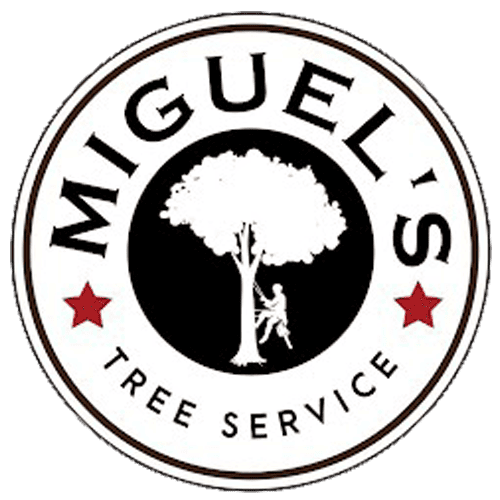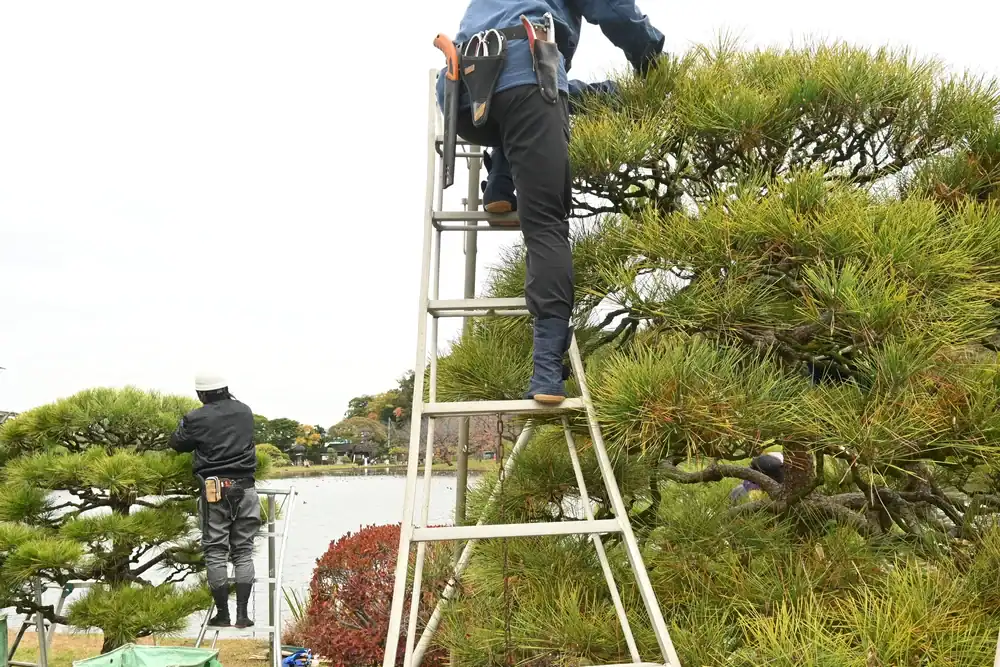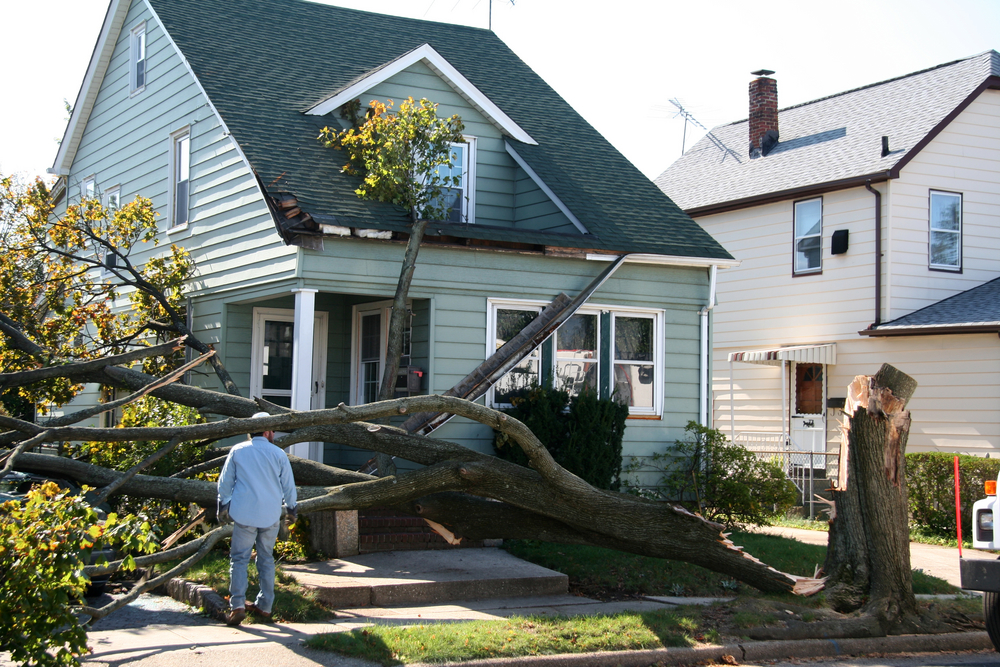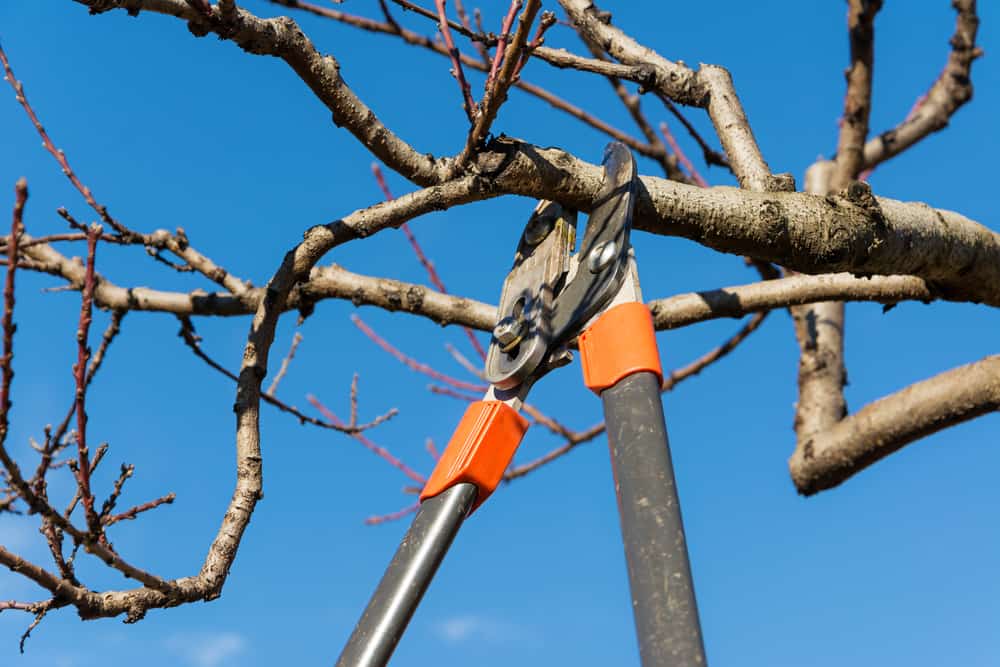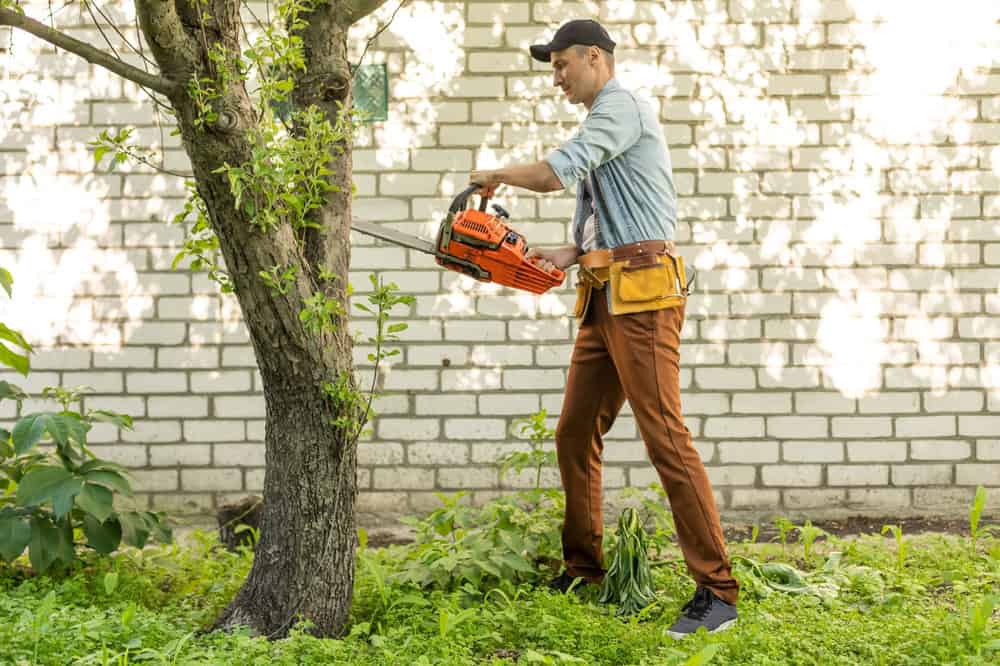Summary:
Tree Pruning and Trimming: Your First Line of Defense
Think of tree pruning as preventive medicine for your landscape. Tree pruning and trimming involves removing dead, overgrown, or hazardous branches to improve tree health and structure. It’s not about making trees look neat. It’s about stopping problems before they start.
Professional tree trimming services strengthen your trees against Suffolk County’s challenging weather. Smart pruning removes vulnerable growth before storms do it for you—usually at the worst possible time and in the most expensive way possible.
The timing matters too. Most tree pruning happens during dormant seasons when trees can heal properly without stress.
When Your Trees Need Professional Tree Pruning
You don’t need to be an arborist to spot trees that need attention. But you do need to know what to look for. Dead branches are obvious—they’re brittle, leafless, and often discolored. Other warning signs are subtler.
Watch for branches that cross or rub against each other. These create wounds that invite disease and pests. Look for growth that’s too close to your house, especially near gutters, windows, or your roof. Tree limbs that overhang your home can be knocked down during storms, damaging your roof and even falling into your house. Limbs can also blow into your siding or repeatedly rub against your home and cause scratching or deeper damage.
Crown density is another factor. If your tree’s canopy is so thick that little light reaches the ground beneath it, it’s probably too dense. This creates stress on the tree and makes it more vulnerable to wind damage. We thin the crown strategically. We maintain the tree’s natural shape while improving its structural integrity.
Tree pruning may involve removing branches that interfere with buildings, windows, power lines, vehicles or objects below them, gutters, and roofs. Our Suffolk County tree pruning specialists will also cut dead or sick/diseased branches away, and make necessary adjustments to allow more light penetration making for a healthier tree.
The investment in regular tree trimming services pays off. Pruning services generally cost between $150 and $800 depending on the tree size and complexity. That’s far less than dealing with storm damage or emergency tree removal later.
Suffolk County’s coastal climate adds complexity. Salt spray, strong winds, and rapid weather changes stress trees in ways that inland properties don’t experience. Our professional tree pruning accounts for these local conditions, removing vulnerable growth before nature does it for you.
The Hidden Costs of Skipping Regular Tree Trimming Services
You don’t need to be an arborist to spot trees that need attention. But you do need to know what to look for. Dead branches are obvious—they’re brittle, leafless, and often discolored. Other warning signs are subtler.
Watch for branches that cross or rub against each other. These create wounds that invite disease and pests. Look for growth that’s too close to your house, especially near gutters, windows, or your roof. Tree limbs that overhang your home can be knocked down during storms, damaging your roof and even falling into your house. Limbs can also blow into your siding or repeatedly rub against your home and cause scratching or deeper damage.
Crown density is another factor. If your tree’s canopy is so thick that little light reaches the ground beneath it, it’s probably too dense. This creates stress on the tree and makes it more vulnerable to wind damage. We thin the crown strategically. We maintain the tree’s natural shape while improving its structural integrity.
Tree pruning may involve removing branches that interfere with buildings, windows, power lines, vehicles or objects below them, gutters, and roofs. Our Suffolk County tree pruning specialists will also cut dead or sick/diseased branches away, and make necessary adjustments to allow more light penetration making for a healthier tree.
The investment in regular tree trimming services pays off. Pruning services generally cost between $150 and $800 depending on the tree size and complexity. That’s far less than dealing with storm damage or emergency tree removal later.
Suffolk County’s coastal climate adds complexity. Salt spray, strong winds, and rapid weather changes stress trees in ways that inland properties don’t experience. Our professional tree pruning accounts for these local conditions, removing vulnerable growth before nature does it for you.
Tree Removal: When Tree Cutting Isn't Enough
Sometimes tree pruning isn’t enough. When a tree becomes a genuine hazard to your property or family, tree removal is the only safe option. Common reasons for tree removal in Suffolk County include: Dead, dying, or diseased trees that pose a risk to nearby structures. Clearing land for property expansion or new construction. Trees that have outgrown their designated space and interfere with utilities or structures. Trees weakened by storms, increasing the risk of collapse.
Professional tree removal isn’t just cutting down a tree. It requires careful planning, specialized tree cutting tools, and expertise to avoid damage to your property and surrounding landscape. Tree removal involves more than just cutting down a tree; it requires careful planning to avoid damage to nearby structures, vehicles, and landscapes.
The cost varies significantly based on size, location, and complexity. But it’s always less expensive than the damage a falling tree can cause.
Recognizing When a Tree Must Go
Tree removal decisions aren’t always obvious. But certain warning signs demand immediate professional assessment from a qualified tree company. Some of the common signs that indicate a tree may require removal include extensive dead branches, large cracks in the trunk, leaning posture, or hollow sections within the tree.
Lean is particularly concerning. Trees that are hunched over significantly are likely unhealthy and may fall down. Most trees have a natural lean, but take note of trees that appear to lean much more than neighboring trees. A sudden change in lean after a storm is an emergency. The root system may have been compromised.
Root problems often show above ground before they become critical. Unhealthy trees may also have exposed roots on one side. You might also notice mushrooms or fungal growth around the base, which indicates root rot. Trees planted too close to a home can cause foundational cracks if the roots spread beneath the foundation. This can compromise a home’s structural integrity.
Location matters as much as tree health. Trees growing too close to power lines, buildings, or underground utilities can pose serious threats and necessitate removal. Even healthy trees in the wrong location can become liabilities as they mature.
Tree removal in Suffolk County typically ranges from $500 to $2,500 depending on factors like size, species, and accessibility. Emergency removal costs significantly more. Planning ahead with a professional tree company saves money and prevents the stress of dealing with a tree emergency.
The decision process should always involve a certified arborist. We can assess whether the tree can be saved through treatment or tree pruning, or if removal is the only safe option. Attempting to remove a tree without professional expertise can be extremely dangerous. We have the necessary training, equipment, and experience to handle tree removals safely and efficiently.
Emergency Tree Removal: When Time Matters Most
Suffolk County’s weather doesn’t wait for convenient timing. Storm-related tree damage is a common occurrence, especially during hurricane season and winter storms. When a tree falls or becomes unstable after a storm, every hour matters.
The first step in an emergency tree removal situation is to assess the damage and determine the severity of the risk. If a tree has fallen onto a house, car, or power line, it is crucial to contact emergency services and a Suffolk County tree company immediately. We have the expertise to handle urgent tree removals safely, preventing additional harm.
Emergency tree removal costs more than planned removal—typically 1.5 to 3 times the normal rate. Emergency tree removal services are typically more expensive due to the urgency and potential hazards. If a tree has fallen and is blocking a road or damaging a structure, immediate removal is needed, often at a premium price. Emergency services can cost 1.5 to 3 times more than standard removal because of the need for rapid response and specialized equipment.
The alternative—leaving a dangerous tree in place—can cost much more. Insurance coverage for emergency removal depends on the circumstances. Insurance coverage may also play a role in emergency tree removals. Homeowners should check their insurance policies to understand the extent of coverage for storm-related tree damage. In some cases, the costs of removing a fallen tree may be partially or fully covered by insurance, depending on the circumstances. We can also assist in documenting the damage for insurance claims.
The key is having a relationship with a professional tree service before you need emergency help. Tree companies that know your property and trees can respond faster and more effectively when crisis strikes. Look for tree services that offer 24/7 emergency response and have experience with insurance claims.
Protecting Your Suffolk County Property with Professional Tree Services
Tree care isn’t about perfection—it’s about protection. Trees are essential to your property and we are committed to helping you maintain their health and beauty. Our advanced equipment and techniques guarantee exceptional service and customer satisfaction while ensuring the safety of our customers.
The five essential tree services—tree pruning, tree removal, stump grinding, emergency response, and disease management—work together to keep your property safe and beautiful. Regular tree trimming services prevent emergencies. Our professional tree company expertise ensures the job is done right the first time.
Don’t wait for the next storm to test your trees. Contact Miguels Tree Service today to assess your property’s needs and develop a maintenance plan that protects your Suffolk County investment year-round.
